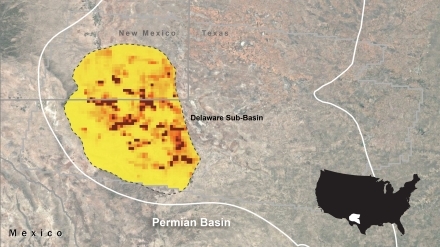Since 2020, oil and gas production in this region of the Permian has increased ~20% in Texas and more than 100% in New Mexico. Both regions have young well populations — about 40% under five years old — which account for more than 70% of current production. Total gas production was also closely aligned, suggesting that other mechanisms, beyond production characteristics, likely explain the observed differences in methane intensities. Researchers associate this to the implementation of effective emissions reduction strategies, which New Mexico began implementing in 2021.
Although methane intensity in the Delaware Sub-Basin is significantly lower in New Mexico than in Texas, at more than 1% it is still appreciably high. Across the entire Permian region observed by MethaneSAT, oil and gas operations are emitting approximately 440 tonnes of methane per hour.
New possibilities for methane observation
The findings are the result of orbital sensing technology and analytics developed by MethaneSAT, enabling high precision, high-resolution measurement of methane emissions over large areas.
The data that enabled these observations and analyses required frequent revisits in order to provide a quantitative picture of methane emissions aggregated over wide areas of the Permian Basin. Producing granular measurement-based and policy-relevant insights at the sub-basin and state levels is a significant advancement in emission quantification capability enabled by MethaneSAT’s high-precision measurements and analytics.

